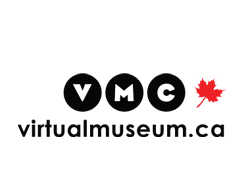Home | Major Sporting Events | Paralympic Games
Mini Documentary Paralympic Games
Video Transcript
[Images of Paralympic athletes competing, footage of Paralympic events. Narrator - Michael Edgson, images of athletes entering a stadium and Rick Hansen at the start of a wheelchair race.]
Canada first became involved in the Paralympic movement through the trail blazing efforts of Dr. Robert Jackson. Volunteering medical support at the 1964 Olympics in Tokyo, Jackson was dismayed to find out that Canada was not represented at the Paralympic Games that year. Returning home, he founded the Wheelchair Sports Association of Canada in 1967 and helped coordinate Canada's first Paralympic team in 1968. Dr. Jackson's spirited promotion of disability sport in Canada culminated in the organization of the fifth Paralympic Games held in Toronto immediately following the 1976 Olympic Games in Montreal. With 1,600 athletes from 42 countries competing, attendance exceeded all expectations.
[Image of para-athletes competing, at starting blocks of a race, running on a track, playing volleyball, wheelchair racing, shooting, playing goalball, swimming, and fencing.]
Breaking new ground, the 1976 Paralympic Games allowed athletes with visual impairments and amputations to participate in medal events for the first time. Competitions were also expanded to include exciting new events such as wheelchair racing, shooting, and goalball, a team sport for athletes with visual impairments played with a ball that contains bells. Thrilled by the exciting quality of competition, the 1976 Paralympic Games exposed many Canadians to the powerful stories and achievements of athletes with disabilities for the first time.
[Images of para athletes cycling, playing soccer, wheelchair racing, images of Dr. Steadward with Adrienne Clarkson, speaking at a podium, with athletes, speaking at a Paralympic Games, posing with Canadian team members, athletes playing wheelchair volleyball, Steadward in front of lockers, participating in a cultural ceremony, presenting laurel wreath to an athlete, holding one of three Paralympic torches at the 1998 Paralympic Games, footage of Dr. Steadward speaking to athletes as they train at a gym.]
Following Canada's first experience hosting the Paralympic competition in 1976, another Canadian boldly spearheaded effort to invigorate the international Paralympic movement. Dr. Robert Steadward's passion for disabled sport began when he was studying Physical Education at the University of Alberta. After organizing a wheelchair basketball team, he began to work regularly with athletes with a disability often volunteering as a coach and administrator. Steadward's advocacy for disability sport was lifelong and legendary. In 1989, he helped to establish the International Paralympic Committee. As founding president, he worked tirelessly to improve funding, exposure and respect for the Paralympic Games as a high performance, multi-sport competition. His crowning achievement was an agreement signed with the International Olympic Committee in 2001. That had insured that Paralympic Games would be staged concurrently with the Olympic Games as a truly parallel event.
The 2010 Paralympic Winter Games held immediately following the Olympic Winter Games in Vancouver powerfully demonstrated Steadward's transformational impact. Canada had not hosted a Paralympic competition since 1976 and popular perceptions of the event had changed considerably.
[Images of Lauren Woolstencroft skiing, holding medal, carrying Canadian flag, holding skis, images of torch ceremony at 2010 Paralympic Games, image of fans holding each letter of her name to spell Lauren, images of Lauren skiing]
The extraordinary achievements of Paralympians, like Lauren Woolstencroft, now excited Canadians as never before. Becoming a member of the Canadian Para-alpine Ski Team in 1998, Lauren Woolstencroft first competed in the 2002 Paralympic Winter Games in Salt Lake City where she won two gold medals and a bronze. She followed up this outstanding performance with a gold medal and silver medal at the 2006 Paralympic Winter Games in Torino. Finally on home soil, Lauren won five gold medals in six days in the 2010 Paralympic Winter Games earning top honours in the standing category of alpine skiing event; Super G, slalom, giant slalom, and super combined events. Dominating the podium in the Para-alpine skiing, she set a new record for the most gold medals ever won by a woman in a single Paralympic Winter Games.
[Footage of ice sledge hockey at the Torino Paralympic Games, presentation of a medal at Torino Games, Michael Edgson - images behind him of biathletes shooting, throwing a discus and footage of wheelchair racing.]
Carrying forward the pioneering vision of Canadian builders and athletes, the Paralympic Games have become much more than an inclusive endeavour to empower persons with a disability through sport. Creating a common ground that promotes awareness and understanding of disability, Paralympic competitors are no longer defined by their limitations.
Breaking down barriers and redefining competitive excellence, Canadian Paralympians are increasingly honoured as elite athletes whose journey to fulfill their potential and achieve excellence resonate with the hopes and aspirations of an entire nation.
Previous Next


